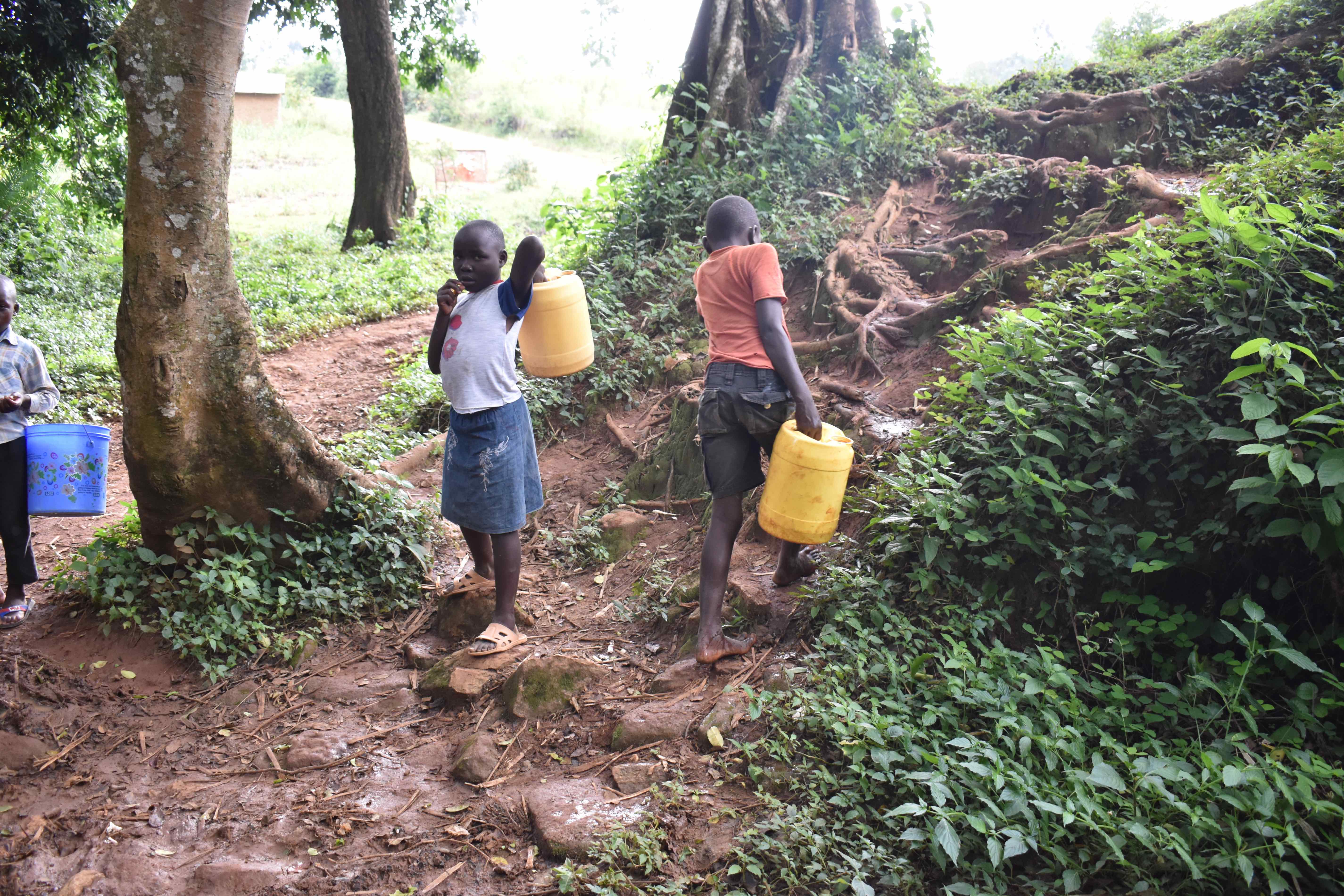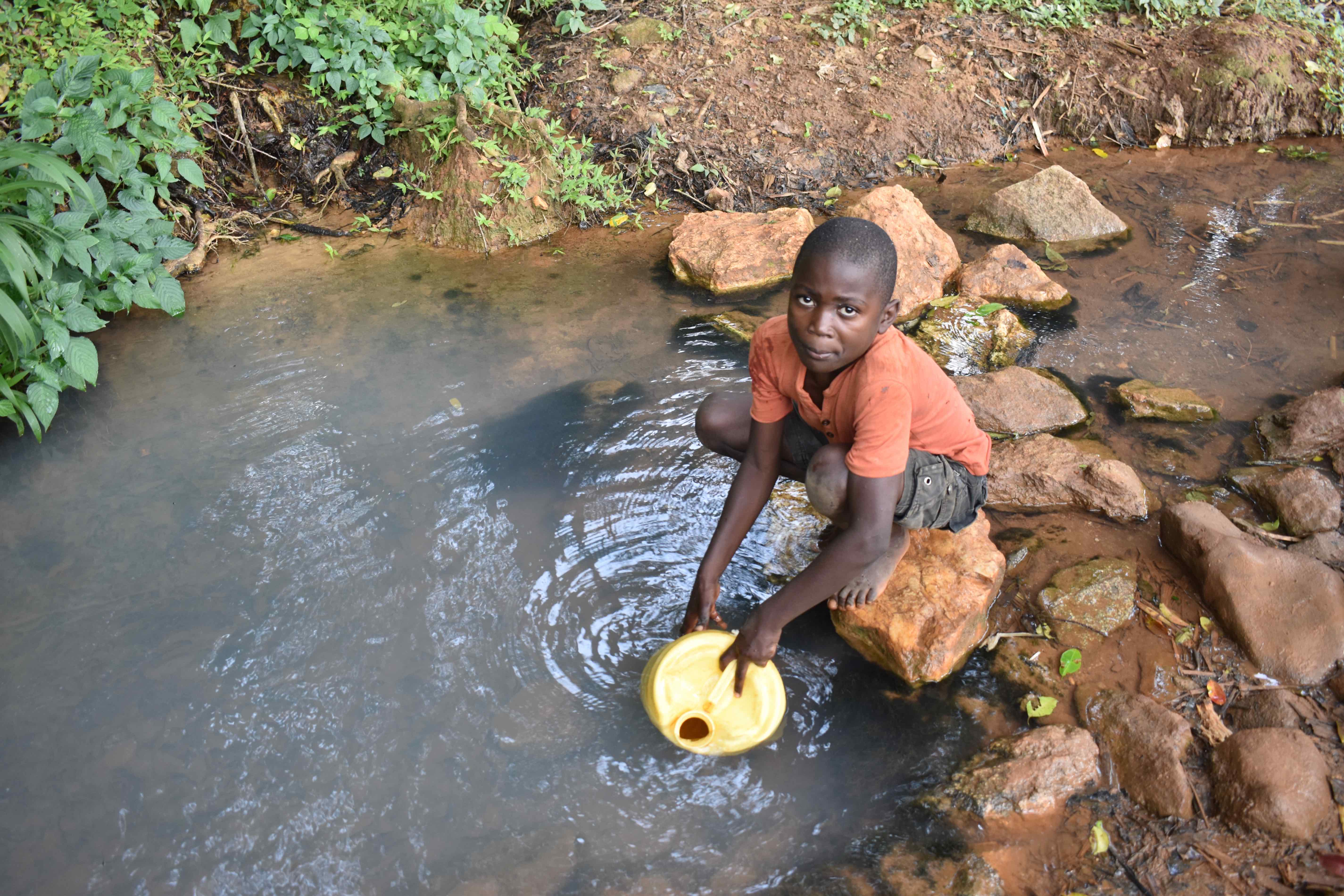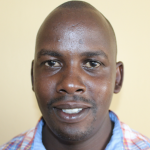June, 2022: Mang'uliro Spring Protection Complete!
Mang'uliro Community now has access to clean water! We transformed Mang'uliro Spring into a flowing source of naturally filtered water thanks to your donation. Our team also trained the community on improved sanitation and hygiene practices. Together, these components will unlock the opportunity for community members to live better, healthier lives.

When we first spoke to Agribina Muudi, a 34-year-old farmer, during our first visit to Mang'uliro Community, she was under a lot of financial strain. Her savings had been drained by medical treatments for herself and her family members when they suffered from frequent water-related illnesses.
But now that the spring is protected, Agribina said, "Access to reliable, safe water means a lot to me. First, good health for me and my loved ones, which is wealth because of reduced or no waterborne and water-related diseases attributed to the water point at all."

Agribina.
Children were just as thankful for the new waterpoint.

Winston.
"I will have access to safe clean water, hence I will not be missing going to school because of drinking contaminated water which will, in turn, affect my health," said Winston N., 12. He continued, "Since we now have access to clean water now, my parents will not be straining to pay school fees and other school personal effects."
Preparing for Spring Protection
Community members worked together to source and carry all locally available construction materials to the spring. These included bricks, sand, stones, and fencing poles. Some people also chiseled away at large rocks to break them down into gravel. Because people have to carry most items by hand, the material-collection process can take anywhere from a few weeks to months.

Children from the community help collect building materials.
When the community was ready, we sent a lorry to deliver the remaining construction materials, including cement, plastic tarps, and hardware. Then, our construction artisan and field officers deployed to the spring to begin work. Individual households provided meals throughout each day to sustain the work team.
From Open Source to Protected Spring: A Step-by-Step Process
At last, it was time to dig in at the spring! Locals lent their strength to the artisans to help with the manual labor.

Community members at work.
First, we cleared and excavated the spring area. Next, we dug a drainage channel below the spring and several runoff diversion channels above and around the spring. These help to divert surface contaminants away.

Excavation.
To ensure community members could still access water throughout the construction process, we also dug temporary channels from the spring's eye around the construction site. This allowed water to flow without disrupting community members' tasks or the construction work.

Laying the foundation.
Excavation created space for setting the spring's foundation, made of thick plastic tarp, wire mesh, concrete, and waterproof cement. After establishing the base, we started brickwork to build the headwall, wing walls, and stairs.

Brickwork begins.
Once the walls had grown tall enough, we began one of the most crucial steps: setting the discharge pipe. The discharge pipe needs to be positioned low enough in the headwall so the water level never rises above the spring's eye, yet high enough to allow room for the average jerrycan (a 20-liter container) to sit beneath the pipe without making contact.

Setting the discharge pipe.
If we place the discharge pipe too high above the spring's eye, backpressure could force water to emerge elsewhere. Too low, and community members would not be able to access the water easily. We embedded the pipe using clay (or mortar when clay is in short supply) and placed it at an incline to ensure water flows in the right direction.

Cementing the rub walls.
In coordination with brickwork, we pitched stones on both sides of the spring's drainage channel. We then cemented and plastered each stone, forming the rub walls. These walls discourage people and animals from standing in that area, which could cause soil erosion and a clogged drainage area.

Plaster work.
We then cemented and plastered both sides of the headwall and wing walls. These finishing layers reinforce the brickwork and prevent water in the reservoir from seeping through the walls. In turn, enough pressure builds in the reservoir box to push water out through the discharge pipe.

Installing tiles.
As the headwall and wing walls cured, we cemented and plastered the stairs and installed four tiles beneath the discharge pipe. The tiles protect the concrete from the falling water's erosive force while beautifying the spring and facilitating easy cleaning of the spring floor.

Backfilling the reservoir box with clay.
The final stage of construction is backfilling the reservoir box behind the discharge pipe. We cleared the collection box of any debris that may have fallen during construction. Then we redirected the temporary diversion channels back into the reservoir box, channeling water into this area for the first time. We closed off all of the other exits to start forcing water through the discharge pipe only.

Adding a stone layer to the reservoir box.
We filled up the reservoir area with the large, clean stones community members had gathered, arranging them in layers like a well-fitting puzzle. We covered the rocks with a thick plastic tarp to minimize potential contamination sources, then piled enough dirt on top to compensate for future settling.

Community members transplant grass.
Community members transplanted grass onto the backfilled soil to help prevent erosion. Finally, the collection area was fenced to discourage any person or animal from walking on it. Compaction can lead to disturbances in the backfill layers and potentially compromise water quality.
The entire construction process took about two weeks of work and patience to allow the cement and plaster to finish curing. As soon as the spring was ready, people got the okay from our field officers to fetch water.

Completed spring.
Interestingly, during construction, several people from surrounding villages visited to witness the work being done in Mang'uliro village. Since then, they have been calling and inquiring if The Water Project also helps communities protect shallow wells where springs are not easily found. We will continue to have a conversation with surrounding communities about how we may be able to help in the future.

After work was completed, community members assembled at the water point for prayer, thanking God and the donors for protecting their spring. We officially handed over the spring to mark the community's ownership of the water point. Happiness, thanksgiving, and appreciation were the order of the day, flowing in all directions.
Training on Health, Hygiene, COVID-19, and More
Together with the community, we found their preferred date for training while considering other community calendar events, such as the agricultural season and social events. We requested a representative group of community members to attend training to relay the information learned to the rest of their family and friends.
When the day arrived, facilitators Jonathan Mutai, Rose Serete, Nelly Chebet, and Victor Musemi deployed to the site to lead the event. 15 people attended the training, including nine women and six men. We held the training under shade trees at one of the community members' homesteads.

Group photo of training participants and staff.
We covered several topics, including community participation in the project, leadership and governance, personal and environmental hygiene, water handling and treatment, spring maintenance, dental hygiene, the ten steps of handwashing, disease prevention, and how to make and use handwashing stations.

Learning proper handwashing techniques.
During the leadership and governance session, we held an election for the newly formed water user committee leaders, who will oversee the maintenance of the spring. We also brainstormed income-generating activities. Community members can now start a group savings account for any future minor repairs to the spring and a cooperative lending group, enabling them to develop small businesses.

Discussion surrounding good and bad hygiene habits.
One of the most interesting and entertaining training topics of the day was environmental hygiene. Teaching aids depicting good and bad habits were distributed amongst the participants so they could share their thoughts with one another.
One of the participants, a middle-aged man, received a picture of a boy defecating in a bush. He made a comment that made the others burst out in laughter when he strongly condemned the habit depicted in the photo saying habits like this should not be happening during this century in any community because the practice is only for witches.

Participants learn how to make soap.
Cook Philip Burudi, 58, and a member of the Water User Committee, said, "The training was of great value to me. I am now a grandfather but I have not known of the steps of handwashing until today's training. More so [I] have gained a lot when it comes to hygiene and sanitation so I will keep on passing the same good sanitation and hygiene practices to our children so as not to pass the challenges I passed through."

Philip practices hand washing.
When an issue arises concerning the spring, the water user committee is equipped with the necessary skills to rectify the problem and ensure the water point works appropriately. However, if the issue is beyond their capabilities, they can contact our field officers to assist them. Also, we will continue to offer them unmatchable support as a part of our ongoing monitoring and maintenance program.

The elected Water User Committee.
Thank you for making all of this possible!





 Protected Spring
Protected Spring
 Rehabilitation Project
Rehabilitation Project














































